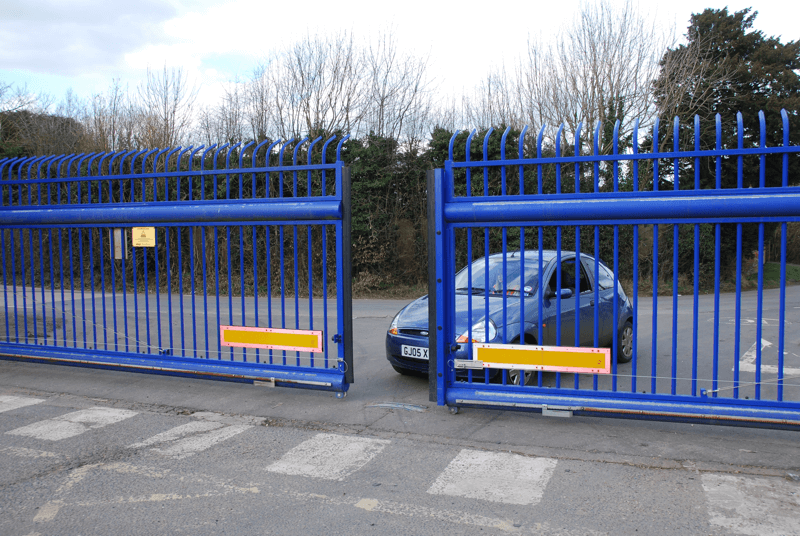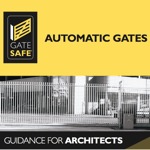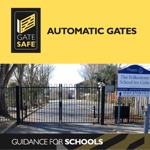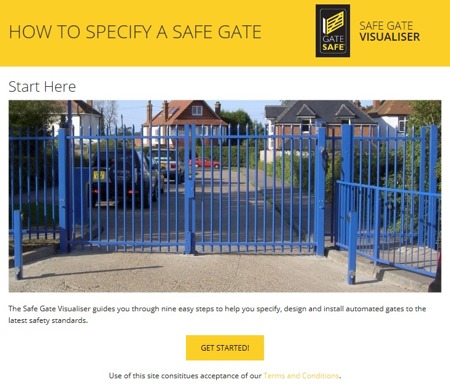Home » Help & Advice » Industry Professionals
Industry Professionals
It is estimated that nearly 300,000 new automated gates are being installed every year, in a wide range of settings, including private residences, housing developments, commercial properties and schools / nurseries & education centres. Combine this with the number of existing gates in the field and it is likely that there are currently in excess of three million gates in existence.
A commercial gate owner has a duty of care to ensure that the gate is safe and regularly maintained. Equally, any professional associated with the original installation or subsequent maintenance of the gate has a duty to ensure that it is safe and legally compliant. Failure to do so may result in legal action for the role unwittingly played in any resulting accident or fatality … Cases to date have included firms being fined up to £80,000, with one installer being served a 42-month prison sentence.
Yet recent surveys have showed a staggering 90% of gates have been shown to be unsafe.
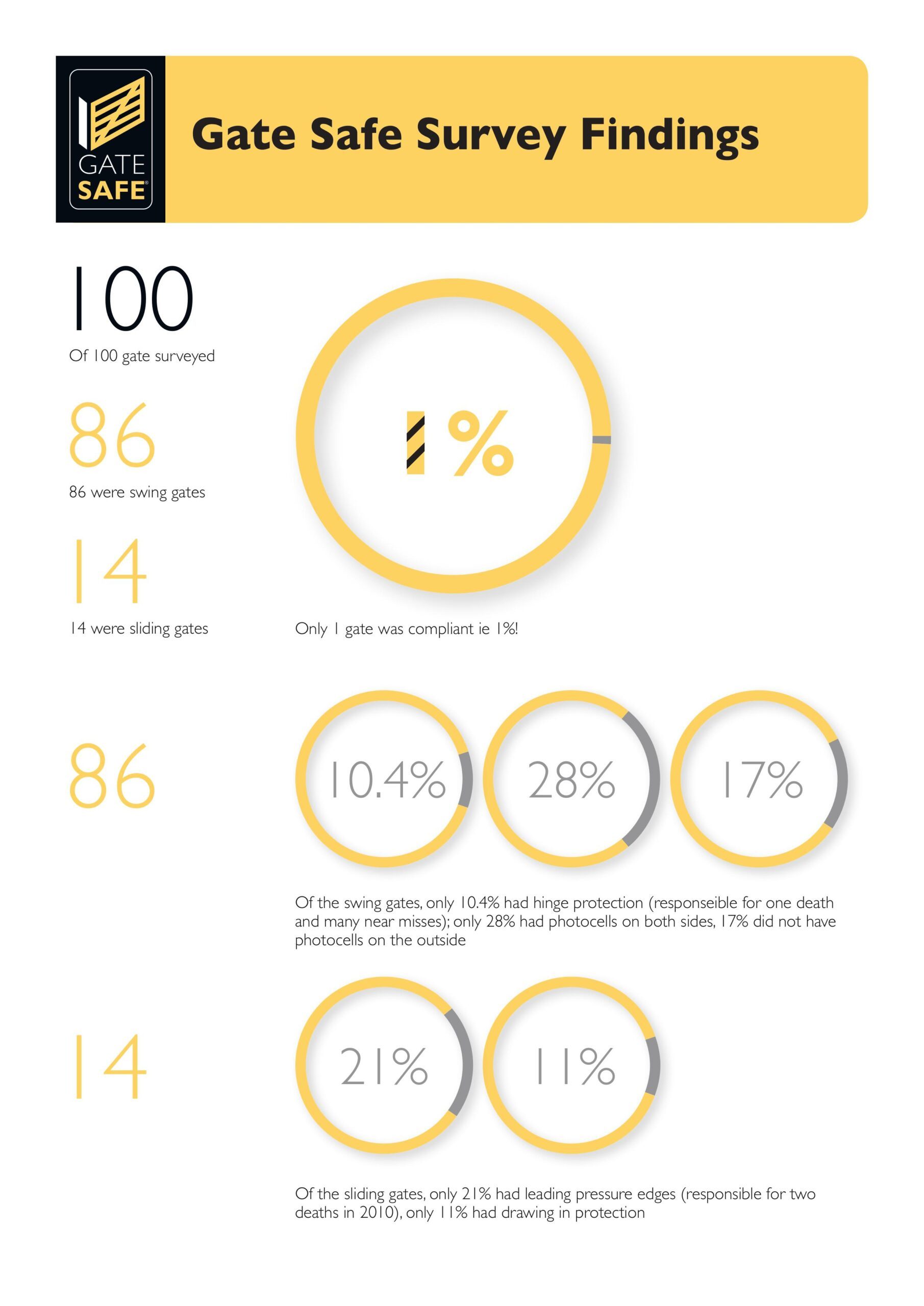
Independent Gate / Barrier Assessments
As a completely independent body with a long-standing reputation in gate safety, Gate Safe is able to provide a full risk assessment to ensure any gate/barrier is compliant with the Supply of Machinery (Safety) Regulations 2008 and is operating safely.
Site Survey
Gate Safe can attend site to undertake a full risk assessment on the gate/barrier to assess its current safety and operating performance and provide a comprehensive assessment and written report summarising the findings from the survey. This generates a clear explanation of the possible solutions recommended to upgrade the machinery to deliver a safe and compliant installation. Photographs are included to highlight any areas of concern. You can request a survey on our Survey Case Studies page.
Independent survey prices are based on distance travelled and number of gates to be surveyed. Please contact Gate Safe to discuss your requirements.
Gate Safe is unable to provide costings for any potential works; we suggest you speak to a Gate Safe installer for an accurate quotation: Find an installer by Postcode.
Desk-Based Risk Assessment
Gate Safe also undertakes a desk-based risk assessment based on information provided by the gate owner (includes review of safety features and important factors associated with gate safety by design) along with photographs/video of the gate. This evidence offers a good indication of the current safety of any gate. Upon review of these materials, Gate Safe will forward a written report summarising any suggested upgrades which may be required.
Gate Safe can only assess the gate/barrier based on the information provided so this type of risk assessment is unable to take into consideration the force used to operate the gate or other non-evident hazards. Price on application.
Expert Witness
There are occasions when court proceedings have been initiated following an automated gate accident, where an impartial view is required to determine whether or not a gate is deemed safe in line with current health and safety recommendations. As the pioneering body associated with the promotion of automated gate safety, Gate Safe has been invited to act as an ‘Expert Witness’ in such scenarios.
Gate Safe Guides
Have you designed a safe gate?
Download our ARCHITECTS guide
Gate Safe estimates that there are nearly 25,000 schools in the UK, based on recent survey activity which showed as many as 90% of gates audited were unsafe, there are potentially 20,000 unsafe gates in a school setting. Is yours one of them?
Download our SCHOOLS guide
Have you powered a safe gate?
Download our ELECTRICIANS guide
Gate Specification Tool
FAQs
How do photocells / light curtains work on electric gates?
Photocells should consist of a receiver and transmitter and all of the time the receiver can “see” the transmitter it will allow the gate to operate. Depending on how they are wired to the control board the photocells will only stop the gate or barrier in the closing cycle of the gate. Typically they would not stop a gate when it is opening but if the beam is broken when the gate is closing the gate would stop and fully open again. Photocells need to fitted at the appropriate heights to enable a signal to be effectively transmitted.
If as an installer I see a gate that I consider to be unsafe can I disconnect it?
Strictly speaking no, but you should contact the user/owner of the property and advise them verbally and also confirm the conversation in writing. If you are commissioned to review a gate it would be right to isolate the gate prior to commencing any works and not turn it back on if it is unsafe.
As an installer, what are the legal implications for me if an automatic gate I have installed causes an accident?
If you install a gate that does not comply with The Supply of Machinery (Safety) Regulations 2008 and is not correctly UKCA marked in the event of an injury, the HSE would be likely to prosecute the installer/supplier of the machine (ie automated gate).
What is the legal requirement for automatic gate maintenance?
There is a legal requirement for any gate on commercial properties to be maintained annually. Please note that a house which employs a gardener or secretary is considered a commercial property. Gate Safe recommends maintenance checks every six months as a minimum.
What is the legal gap on electric gates?
Typically gaps of 100 mm (4”) should be avoided or mitigated against but Gate Safe would always recommend a risk assessment of any gate to ascertain the potential risks / hazards pertinent to each individual installation and add the relevant safety devices to eliminate the risk.
Rising arm barrier – where are the force testing points?
The main area of risk with a rising arm barrier is someone walking under the barrier when the barrier is closing so this is the area that would need to be made safe. This can be done with photocells, safety edges or force testing. Gate Safe’s preferred option is photocells and pressure edges. Additionally there may be further trap points around the motor housing which would need to be mitigated against.
Why does Gate Safe not concur with the use of force testing as a means of safeguarding an automated gate?
Our reasons are various. The fact that a gate has been force tested does not mean that it will be safe in its operation. Testing does not take into account the wind acting on a gate, which could double, or even treble the forces. Force testing only tests the leading edge of a gate and for a swing gate the forces will be increased as you approach the hinge end of the gate.
Are there not also possible charges of negligence even if the gate is CE marked but has not been properly installed / absence of safety?
Simply putting the CE mark on the equipment without ensuring the gate is safe when in use will not protect an installer from prosecution
As an installer, where can I find a copy of a risk assessment template for electric gates?
The Gate Safe web site’s members area has templates for risk assessments along with some simple diagrams that detail some of the areas of concern. You will need to have undergone the Gate Safe Aware training to access this portal.
When the swing gate opens and closes the point between the hinges reduces to a gap less than the recommended distance – how can I overcome this?
The area around the hinge on a swing gate can be made safe in a number of ways. Pressure edges can be applied on the post or the gate to prevent crushing; a gaitor installed between the gate and the posts to prevent the risk of entrapment or a total redesign of the gate can be undertaken to ensure an installation where the gap does not reduce
Are automated gates covered by building regulations?
Automatic gates are covered by the Machinery Directive and should be installed with a CE mark to show compliance with all of the standards to ensure a safe operation
What training do you need to undertake to be a qualified installer of automatic gates?
Any installer of automatic gate should have training on two levels. The Gate Safe Aware training would make the installer aware of the risks associated with the installation and use of the automated gates, and he / she would also need specific training on the equipment being installed.
How many photocells should be fitted to an automated gate to render it safe?
Two pairs of photocells should be fitted along with another different type of safety device.
How do you keep a swing gate from closing?
This can be done electronically, for example if a drive needs unimpeded access by using a time clock. Make sure you use a timer which features 365 days and be aware of calendar month date changes.
This may also require the gate to be latched, using a magnetic lock or locking operator.
How can a sub contractor cover himself or herself when carrying out repairs on a gate that is not compliant?
If a contractor is asked to attend to a gate, before starting he should carry out a risk assessment on the gate and its intended use. If the job that has been commissioned represents him leaving the gate in an unsafe condition, he should advise the client of the remedial works that need to be carried out to deliver a safe and compliant installation. Under no circumstances should the installer do any work on the gate unless he can be sure that the gate will be left in a safe condition after the job is completed. All details should be confirmed in writing.
Are automated gates covered by building regulations?
Automatic gates are covered by the Machinery Directive and should be installed with a CE mark to show compliance with all of the standards to ensure a safe operation.
If a customer is not prepared to pay for safety features on an electric gate, should the installer still go ahead with the installation?
Under no circumstances should an engineer work on a gate that will be left in an unsafe condition once he has carried out the work. He should advise the client of the problems verbally and in writing, and urge them to turn off the gate until a safety upgrade has taken place.
How many pressure edges should be fitted to an automated gate to render it safe?
There is no simple answer since this would always be site specific. But for most sliding gates it would be six or eight, for swing gates it would be five or seven, but this is totally site dependent
